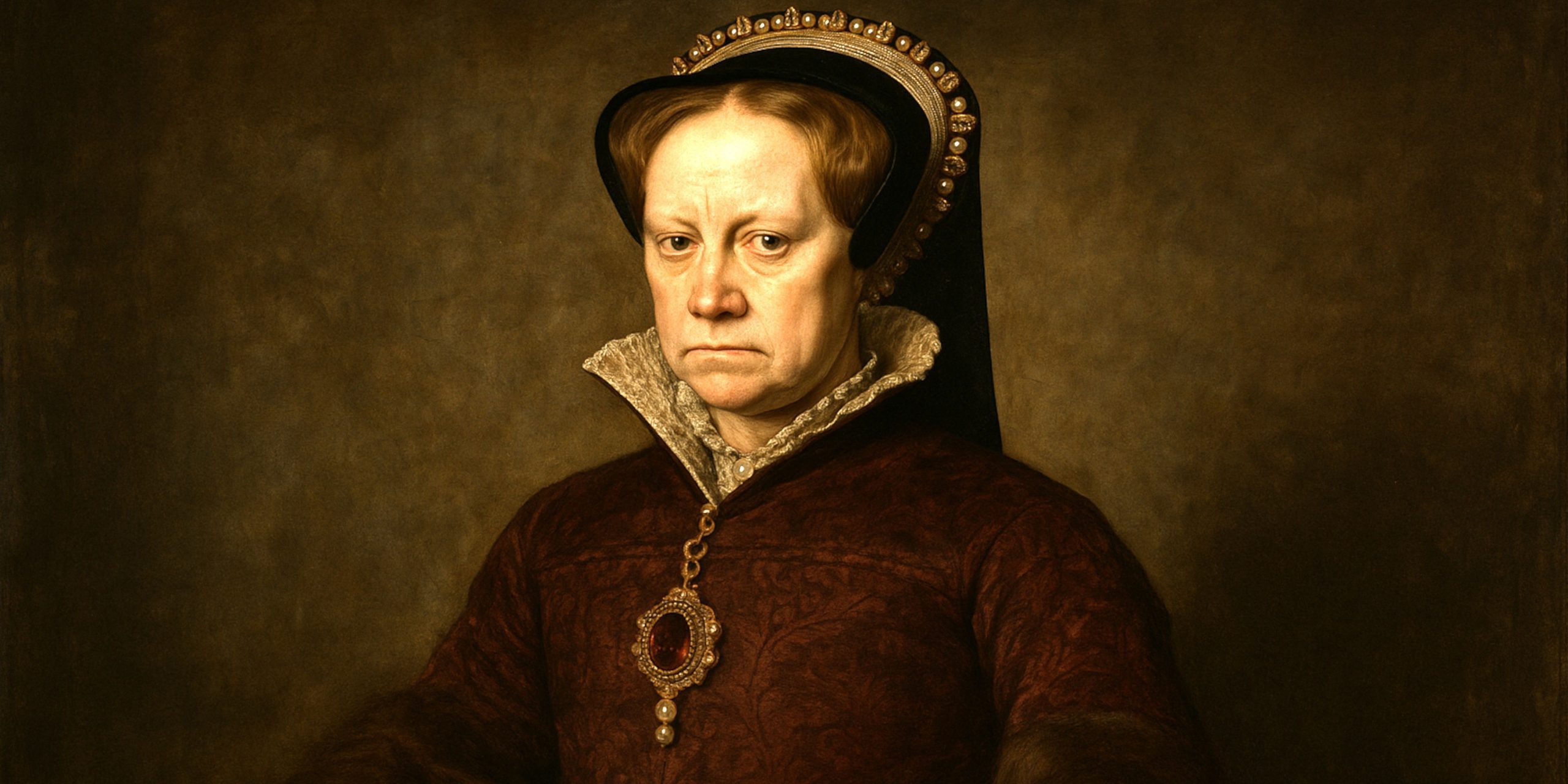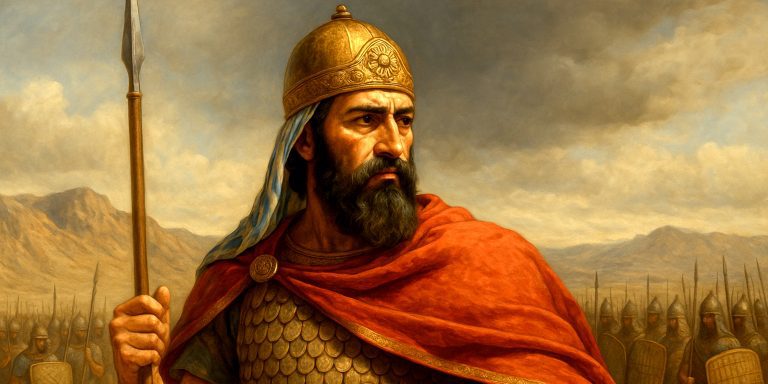
Mary I of England still sits in one of those uncomfortable corners of Tudor history where reputation, propaganda and memory blur together. She ruled for only five years, yet her legacy carries far more weight than those dates suggest. Some see a queen shaped by trauma who tried to restore what she believed was a broken realm. Others see a monarch who leaned heavily on punitive policy. When you look closely, the truth develops a more complicated texture, and that is where she becomes interesting.
Her reign has long been compared with those of her father Henry VIII and her half sister Elizabeth I, two giants of English statecraft. Against such company she is often judged quickly and unfairly. Studying Mary always reminds me how history can trap someone inside a single label, even when the archive shows a more layered person.
Early life and making of a ruler
Mary was born in 1516, the only surviving child of Henry VIII and Catherine of Aragon. Her early years were shaped by privilege, Spanish humanist tutoring and the certainty that she would remain at the centre of dynastic plans.
Then everything crumbled. Her father’s quest for a male heir broke the marriage, stripped her status and separated her from her mother. You can feel the shock ripple through every surviving letter. She spent years fighting to preserve her legitimacy and her faith, and the experience left its mark on her sense of duty. When she reached the throne in 1553, she carried that long memory of dislocation with her, and it influenced her style of rule in ways both constructive and troubling.
Arms and armour of mary’s reign
Mary’s government inherited the Tudor military machine built by Henry VIII. It was heavy, centralised and increasingly professional. She did not reshape it to the degree some monarchs did, but she did maintain and, in some cases, modernise it.
Key features of arms and armour under Mary I
- Continued use of Tudor plate armour for officers, although battlefield plate was thinning as firearms became more influential.
- Expansion of handgunner units, especially calivers and arquebusiers, as England mirrored continental trends.
- Standardisation of pike lengths and shot proportions within militia units.
- Naval investment focused more on maintenance and repair than new construction, but she ensured the fleet stayed operational.
One detail I have always found striking is how Mary relied on traditional Tudor military culture while also stepping, reluctantly, into the gunpowder age. Her government spent far more time reorganising stores, fortifications and militia musters than romantic narratives suggest.
Battles and military accumen
Mary is rarely credited with military leadership, yet she demonstrated a steady political instinct during her most dangerous moment, the Wyatt Rebellion in 1554.
The rebellion aimed to depose her, block her marriage to Philip of Spain and raise Elizabeth as a Protestant successor. Many rulers have crumbled under a mutinous nobility, but Mary did something far more decisive. She faced the London crowds directly, spoke with plain emotion and rallied both commoners and councillors. Contemporary accounts record the impact of that speech at Guildhall. It was not the work of a timid ruler. It was the work of someone who understood how loyalty, symbolism and fear operate in a crisis.
On the continent, England lost Calais in 1558, its last foothold in France. Losing Calais marked a sharp emotional wound for the kingdom, but the military truth is more blunt. The English garrison was underfunded and outdated. France was united, wealthy and capable of concentrating force against a small outpost. Any ruler would have struggled. Mary felt the loss deeply, but the material conditions were against her.
Religious policy and its consequences
Mary’s attempt to restore Catholicism stands as the most controversial feature of her reign. That period saw persecution, Marian burnings and the heavy reintroduction of heresy law. Studying the government records shows a ruler who believed, genuinely and intensely, that religious unity was essential to national stability. I cannot defend the methods, but understanding the mindset helps explain why she acted as she did.
Her policy succeeded in reinstating the old faith on the surface, yet it generated resentment and fear. It is one of those historical ironies that her efforts, intended to secure Catholic England, ultimately strengthened Protestant memory and identity under Elizabeth.
Where to see artefacts from her reign
Mary’s material legacy exists in small but fascinating pockets.
British Museum, London
Royal portraits, coinage from her reign and state papers can be viewed here. The museum also holds ceremonial armour pieces from Tudor armouries that continued in use while she ruled.
National Portrait Gallery, London
Paintings of Mary that chart her changing political image. The contrast between early and late portraits reveals how Tudor artists shaped royal propaganda.
Hampton Court Palace
While most of its splendour reflects Henry VIII, sections of the palace interpret Mary’s time there, including documents and items linked with her household.
The Mary Rose Museum, Portsmouth
Although the ship predates her reign, it gives valuable context for Tudor naval technology that she inherited and maintained.
Latest archaeology and research
Recent Tudor archaeology has tended to focus on landscapes rather than direct Marian finds, yet several strands connect to her era.
- Excavations at the Palace of Westminster have revealed fragments of Tudor decorative tilework that would have lined the corridors Mary walked through during her council meetings.
- Studies of Tudor gunfounding sites, particularly along the Thames, show continued production in the years around her accession, which clarifies how prepared England was for continental conflict.
- Research into Tudor fortifications in the south coast, including Calshot and Southsea, shows improvements and updates logged during her reign, proving she did not neglect coastal defence.
Historical scholarship has also been re-examining Mary’s political networks. Letters between her and Habsburg diplomats have been retranslated in recent years, offering a fresher picture of her as a cautious but capable negotiator.
Legacy and my own reflections as a historian
Mary I still suffers from the weight of her reputation. It is far too easy to freeze her inside a single moment of heresy trials and forget the rest of the monarch that emerges in the documents. When I read her correspondence, I see someone shaped by insecurity, loyalty to her mother and the memory of watching her world torn apart. She was not a masterful ruler, yet she was not the caricature that later propaganda painted her to be.
Her reign teaches us how fragile a kingdom can feel when religion, identity and dynastic history collide. It also shows how much patience is needed when reassessing a monarch whose story has been moulded by those who came after.
She burned painfully bright for five years, and then the narrative passed on to Elizabeth. But Mary’s imprint on the Tudor world remains, quiet yet persistent, the sort of legacy you only notice once you start reading the margins of the archive rather than the headlines.
Watch the documentary:



